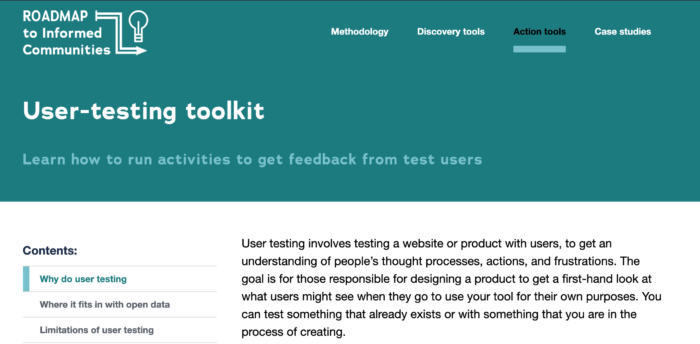Learn how to incorporate user testing into open data projects
If you’re creating something that you want people to use, it’s critical to design around the needs of users — based on user research — and test with real people to gauge success.
User testing is used in the private sector to understand the consumers of a specific product. It’s even more important in the public sector, because governments have a responsibility to serve everyone. This includes government open data programs.
Today, we’re launching a new user-testing toolkit for open data tools, websites, and products. The toolkit provides a brief explanation of user testing and how it fits in with open data, steps to implementation of a sample user testing method, and links to resources with further details and additional techniques. It’s particularly geared toward local governments, but may be useful for any open data programs!
This builds on our release last week of a guide on “co-design” methods, which can be used (after user research is complete) to workshop potential solutions for a specific open data project. This guide can also be used to engage in general ongoing user testing around open data portals and websites.
As described in our library of user personas for open data, there are many different types of users of open data. Some have a great deal of experience and expertise using and analyzing data, while others do not. Some want raw data while others prefer summaries or visualizations. Data users can have all sorts of motivations, including curiosity, government accountability, advocacy, journalism, and business. Getting feedback from a diverse range of test users can help ensure data projects are able to meet the wide range of data user needs.
Are you doing user testing in your community’s open data program? Let us know by emailing opencities@sunlightfoundation.com! Also feel free to send us any feedback or other thoughts.


